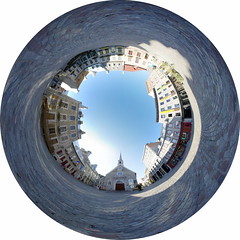© Carol L. Weinfeld
Shiseido came to the San Francisco streets last week in a shiny Airstream trailer to publicize its new Bio-Performance Super Corrective Serum. Employees offered samples and beauty consultations.
It is smart business to meet one's customers in person, in addition to the digital space. One can gain valuable information about one's brand face-to-face in casual conversation, and often learn more than one would in focus groups. Customers also appreciate the approach on their turf, as they go through their day, instead of approaching the brand in a store on their own. The street marketing makes Shiseido's brand more approachable.
Luxury brands effectively utilize social media marketing. For example, Burberry staged a fashion show in China and in real-time online. Gucci engages fans on its Facebook page, and Chanel creates films about its brand for its website.
Fashion brands depend on trends, and understand that social media is an important trend. Companies should not practice social media just for the sake of doing so; it should fit its brand and its customers in the approach.
© Carol L. Weinfeld
Shiseido stationed the trailer near the Union Square shopping district, a good place to reach Shiseido's shoppers, since there are many high-end stores. Know your customers, and seek their surroundings offline and online based on your knowledge of them. They will be pleased to have the attention and interest, and will also be interested in your brand.





